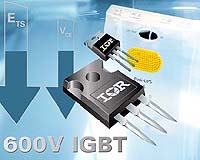 |
Munich, Germany (SPX) Jan 25, 2011 Microscopically small nanostructured arrays of lenses that can record or project amazingly sharp images in brilliant colors are being demonstrated by Fraunhofer research scientists at the nano tech 2011 trade show in Tokyo from February 16 to 18. Lights off - projector on. Lecture theaters, conference halls and seminar rooms currently have to be darkened if the speaker wants to project a presentation on screen. Unfortunately, the attention of the listeners goes off with the lights, and tiredness takes over. A new technique promises to remedy this situation. The projectors of the future will not only be small and easy to use but also shine so brightly that the images appear sharp and clear, even in a sun-filled room. The image illuminating the wall of the Fraunhofer exhibition stand at nano tech 2011 will be produced by a luminous cube. The prototype of the new projector consists of an optical system just eleven millimeters square and three millimeters thick through which a powerful LED lamp shines. The images are amazingly sharp, the colors brilliant - all thanks to micro and nanotechnology. "The special thing about the new projection technology is that the image is already integrated in the microoptics. The pixels measuring just a hundred nanometers or so are stored in a chromium layer under the lens array. Such a microarray has around 250 microlenses, and under each lens there is a microimage. "When all of them are projected onto the wall together, a high-quality complete image is produced from an extremely small projector," explains Marcel Sieler, physicist at the Fraunhofer Institute for Applied Optics and Precision Engineering IOF in Jena. This pocket-sized technology has the potential to replace not only overhead and digital projectors but also cameras. "The commercial prospects for ultra-flat microoptical systems are excellent because they open up numerous new applications - like minicameras or miniprojectors" enthuses Dr. Michael Popall from the the Fraunhofer Institute for Silicate Research ISC. He adds: "The leap in manufacturing quality achieved in recent months can be compared to the advance in television from the cathode ray tube to HDTV." The IOF scientists have also developed a projector that is not much bigger than a box of matches. It can project presentations, video clips and movies from a cell phone or laptop onto any wall - at home, in the office or out and about. Ultra-flat cameras that are ideal for area or production monitoring in exposed locations are another application which will be demonstrated in Tokyo. A special material composition has been developed by researchers at ISC for the manufacture of the microlens arrays used in all these applications. Organic carbon-hydrogen and oxygen compounds are enveloped in an inorganic matrix of silicon oxide or titanium oxide. This prevents the embedded plastics from changing chemically over the course of time. Such ORMOCER's are insensitive to mechanical and thermal loadings. Incidentally, the formula for stabilizing sensitive compounds is very old: The ancient Mayas mixed their natural indigo dye, which normally bleaches quickly in the sun, with a clay mineral to render it fast. As a result, the blue dye they used to decorate the walls of their houses and temples lasted for more than a thousand years. The method employed by the Mayas was very effective but rather crude compared with modern techniques. "Today we can control the chemical bonding of the inorganic and organic substances with nanometer precision," states Popall. "Development of the material, however, is only one part of the puzzle. The shaping process and the technology needed to control it play a crucial role in lens manufacture. It was only through close cooperation between chemists and physicists at Fraunhofer that we succeeded in producing the arrays, substrates and components needed for extremely flat, high-quality optics." The resolution attainable is now almost as high as that of high-quality glass optics - but using significantly less material and space. What's more, the new material can be mass produced, which keeps the costs much lower. Small is beautiful is the principle for the new optical world. The days of suitcase-sized projectors will be therefore numbered.
Share This Article With Planet Earth
Related Links - Nano Technology News From SpaceMart.com Computer Chip Architecture, Technology and Manufacture
 First High-Temp Spin-Field-Effect Transistor Developed
First High-Temp Spin-Field-Effect Transistor DevelopedCollege Station TX (SPX) Dec 29, 2010 An international team of researchers featuring Texas A and M University physicist Jairo Sinova has announced a breakthrough that gives a new spin to semiconductor nanoelectronics and the world of information technology. The team has developed an electrically controllable device whose functionality is based on an electron's spin. Their results, the culmination of a 20-year scientific quest ... read more |
|
| The content herein, unless otherwise known to be public domain, are Copyright 1995-2010 - SpaceDaily. AFP and UPI Wire Stories are copyright Agence France-Presse and United Press International. ESA Portal Reports are copyright European Space Agency. All NASA sourced material is public domain. Additional copyrights may apply in whole or part to other bona fide parties. Advertising does not imply endorsement,agreement or approval of any opinions, statements or information provided by SpaceDaily on any Web page published or hosted by SpaceDaily. Privacy Statement |